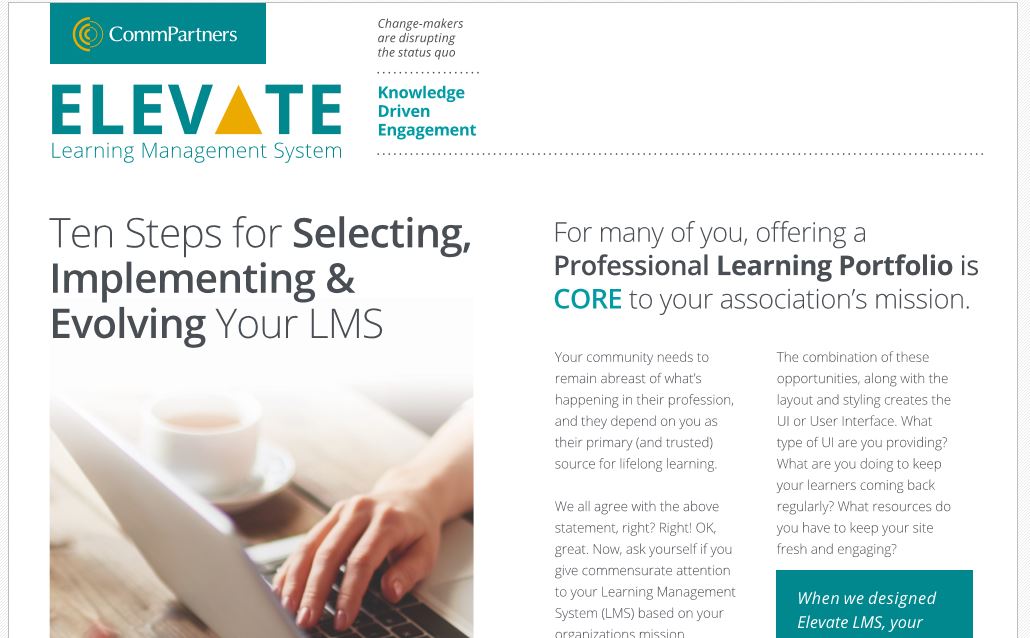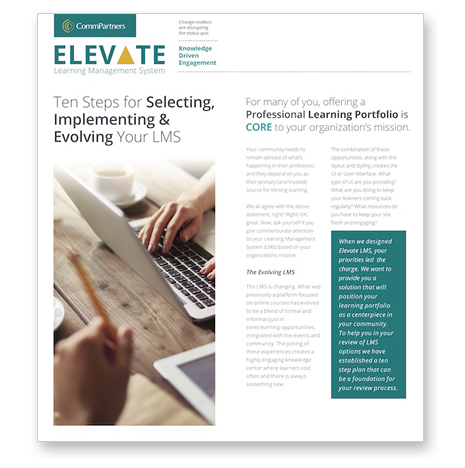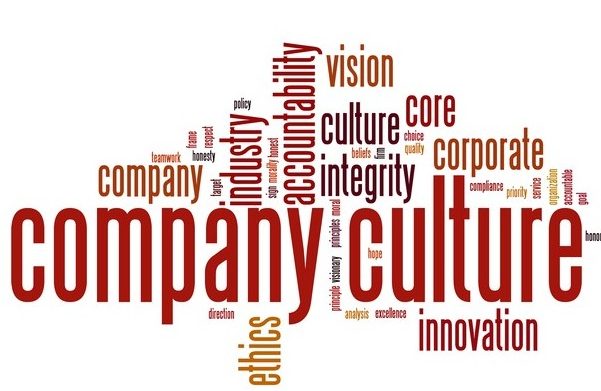
by Aubrey Mellos | Jun 22, 2017 | Blog
FREE WEBINAR
Podcasts: Jumping Headfirst Without Fear
July 6th 1-2pm EDT
REGISTER NOW
Guest post by Doug Sandler
Think about today’s society. When people want it, they want it now. Media on-demand is hot and now more than ever it makes sense to capitalize on audio on-demand. A sharp segment of the audio on demand market is turning to podcasting to get their message out. 67 million people tune into podcasts every month* and if you are a fan of podcasts, you understand why. As a listener, you get to select your podcasts with pinpoint accuracy, the subject matter, format and style you like best. Plus, you get to choose when you listen. Your commute can turn your car into your university on wheels, or your kitchen can become your classroom while you are cooking dinner. No matter where you are, your podcasts can follow you.
Podcasting for your Association
So why should you care? As an association, this means a podcast can be utilized multi-fold. First, it can be used to provide educational content to your membership, from right within your learning management system (LMS). Spread your knowledge to your members and share best practices, industry updates and the latest news specific to your association. Additionally, podcasting is a way to reach a segment of your association that may not have the resources to make it to association gatherings. Many organizations do not have the budget to send all of their staff to conferences. With podcasting, through live recorded conference interviews, you have an opportunity to share conference content and bonus material, further engaging your membership. Furthermore, it is a great platform to diversify your learning portfolio.
Additionally, with podcasting you have an opportunity to create non-dues revenue through podcast sponsorship. Vendors and partners that regularly work with your association are looking for creative ways to reach your membership and podcasting is a premium place to meet your members and share their message. Any fees associated with podcast production can easily be offset by podcast sponsorship.
How to Get Started
Regarding production, getting set up to start a podcast is less complicated than you may think. Typically, entry to this space would consist of purchasing a high quality studio microphone, recording software and source to host your show. Like most associations, however, you might be short handed to handle the technical aspects of the show. There are many production companies for hire to handle all of the technical components of your show. The best advice would be to talk to a full-service production company so your association can develop a strategy for not only producing and editing your show, but to help you best develop a marketing plan to get your show launched and out to your membership. “Done with you” or “done for you” versions of production are available and should be investigated to get your show off and running properly.
One thing is certain, podcasting is on its way up. Now is the time to set the fear aside, get wet, and take advantage of podcasting to reach a greater percentage of your membership and develop an additional revenue stream. You will be extremely satisfied with your results.
 Doug Sandler is founder of TurnKeyPodcast.com, a full service podcast production company. He is also host of The Nice Guys on Business podcast, the #1 ranked business show on Overcast and was awarded iTunes coveted New and Noteworthy ranking when launched in 2015. His interview format show is heard in 165 countries and downloaded over 100,000 times every month.
Doug Sandler is founder of TurnKeyPodcast.com, a full service podcast production company. He is also host of The Nice Guys on Business podcast, the #1 ranked business show on Overcast and was awarded iTunes coveted New and Noteworthy ranking when launched in 2015. His interview format show is heard in 165 countries and downloaded over 100,000 times every month.
*Source: Edison Research and Triton Digital, “The Infinite Dial 2017.”

by Aubrey Mellos | Jun 12, 2017 | Blog
During the past several years there has been much conversation and debate on how associations can continue to thrive in the face of increasing competition. The question is; with all of the outside “noise” influencing our stakeholders, how can these organizations cut through the clutter, and provide clear value? Sharing knowledge in the workplace and with your members is a critical component. How can associations build a learning management system that will meaningfully engage users while also monetizing education efforts?
4 knowledge sharing strategies to increase your presence and bottom line:
- Create the right mix of content.
Each type of content has a role and each role has a specific type of marketability. Offering the right balance will enhance your engagement and provide each member with ongoing value that matches their preferred learning style. Working together, each type will help formulate a robust and engaging presence for sharing knowledge within your organization.
Live Online & Onsite Events: These are online courses, webinars and webcasts, virtual conferences, and in-person conferences. Think of these as the main pieces of furniture in a room. You need these pieces, but to properly decorate the room you need more.
Social Learning: Allow your members to connect with each other and share their personal knowledge. This can take place on live event forums, community integration, and other forms of idea sharing.
Formal Education: This includes SCORM courses, blended learning, learning paths and curriculum programs that provide your members with credits and ongoing credentialing.
Informal Learning: These are typically Podcasts, blogs, news feeds, and content libraries. These components allow participants to engage around a specific topic.
- Provide relevant learning experiences.
You have a substantial amount of information about your members and you should use that knowledge to your advantage in order to present relevant learning opportunities to each individual. Allow for searchable content based on interest and recommend learning based on their past interactions or role. Relevancy is key and each learner is unique.
- Effective branding and layout will make a significant difference.
The visual impact your learning presence has is a factor to not be minimized. Whether you’re sharing knowledge in the workplace, or directly with your members — your offerings should be easy to use, offer simple navigation, and capitalize on your brand. You do not want to clutter the environment, so present the right balance of content and design that will connect with your participants.
- Be creative and bold with your pricing.
Many associations are considering new pricing strategies for their education offerings. Differentiating your pricing structure can be key to attracting members. Subscription plans, couponing, and savings packs are emerging and allow associations to reach a broader member base, while ultimately increasing revenues.
It is important to leverage the special relationship you have with your community in planning your educational offerings. Use what you know to provide relevant and engaging programs and creative pricing strategies. Brand your platform to make it shine with just the right blend of content that incorporates just-in-time learning, community events and more sustainable training opportunities.
Questions About eLearning?
Whether you are considering investing in an LMS or simply looking to better your organization’s e-learning strategy, CommPartners can help you create quality educational experiences that engage and inspire the learner. Contact us online, or give us a call at (800) 274-9390 to learn how we can help.

by Aubrey Mellos | May 30, 2017 | Blog
In order for organizations to provide timely, meaningful, and engaging education, leaders are turning to Learning Management Systems (LMS) that create an interactive learning space for members. Implementing an LMS can seem like a daunting and insurmountable task, but in truth, if you prepare and plan appropriately much of the heavy lifting can be minimized. Be thoughtful, involve the right players, and set the stage for a seamless implementation. Here are three simple steps to help you create and carry-out a successful LMS implementation plan.
Three Tips for Creating a Successful LMS Implementation Plan
Step One: Creation of Project Team
Once it has been determined that you are moving forward with implementing or changing LMS providers, determine who needs to be involved in the process and who simply needs to be aware. What departments will the LMS touch? Should each be represented on the Project Team? How so? Be upfront about the role that each member of the team will play and have an understanding of what the expectations are for each. This core group will be the driving force in ensuring a smooth and successful LMS implementation. Get the team excited and allow for open dialogue early on.
Step Two: Ideation & Concepting
Now that you have an All-Star Team in place, it’s time to start hosting generative brainstorming conversations. Your goal is to compile your team’s ultimate wish list of LMS features, options, and member/staff experiences.
Be sure to define your goals up-front, with buy-in from all of the key players. What are your education objectives? Business requirements? Engagement goals? Just as important is to identify and plan how you will integrate, design, and layout your LMS. Having clearly defined goals and implementation plans outlined will ensure that things stay on track throughout your review of vendors.
Step Three: Content & Context Strategy
Social and informal learning are becoming key drivers for a dynamic learner experience and a diverse content strategy is critical. Discussions, shared interests and engagement opportunities enhance content choices and create space for collaboration and different views. It is important to identify your education strategy and content/context mix first – then begin to work through the technology requirements to bring your strategy to life. An LMS is a powerful solution to support and advance your education program, not define it.
Interested in how to continue your journey through the LMS selection and implementation process?
Download the Complete Ten Step E-Guide for Selecting, Implementing, and Evolving Your LMS


by Aubrey Mellos | May 16, 2017 | Blog
Virtual events are a trend that won’t be going away and are quickly becoming a strategic must for associations. Virtual events can reach deep within organizations and impact a larger number of participants. Traditionally, only a select group of individuals are able to attend in-person events, leaving a majority with nothing. Virtual events are evolving the way associations offer education, are cost effective, powerful and an efficient way of extending your most compelling content to your entire community.
Here are five tips to ensure your virtual events are a success:
1 – Plan, Plan, Plan.
Virtual events require a significant amount of planning – maybe even more than place-based events. Ensure that you and your team have openly communicated about goals, intended outcomes, content and metrics. Develop and document a detailed event strategy with defined dates/milestones and pair with a corresponding production plan. A calendar of tasks and project deadlines will make for a smooth execution.
2 – Build-In Engagement.
Capitalize on the unique opportunities that a virtual event and the associated technology can offer. Leverage polls, self-assessments, chat features and integrated social channels. You can start the engagement well before your event and extend well beyond it is over.
3 – Leverage Experienced Production Partners
Having the right vendor partners is essential to the success of your event. Events that are poorly produced or using ineffective technology can leave attendees frustrated and dissatisfied. Be sure your partners can handle all support inquiries during the live event so that you and your team can focus on content delivery.
4 – Prep Speakers & Staff
Once the agenda is set, ensure that your speakers are well equipped to deliver stellar presentations that connect with the audience. In preparation of the event, take some time to guide your speakers on the technology and ensure they feel comfortable and encouraged. Additionally, make sure appropriate staff are prepared and have clearly defined roles for the live event.
5 – Promote & Build Excitement
You have invested significant time in planning and preparing for your event. Be sure to effectively market and promote your event with the same intensity as place-based events. Promote early, often, and increase the intensity as you lead up to the live event. Facilitate the engagement, open up discussions, and promote conversation through social media. Getting attendees excited before the event will promise a lively and robust event and even pave the way for post event conversations.
Virtual events shed a new light on member engagement strategies. They remove the barriers for attendance that exist with place-based events and as a result, extend your reach, revenue, and impact.
CommPartners produces hundreds of virtual events each year, including many that are executed from within an LMS environment. The seamless integration of CommPartners’ webinar and multimedia platforms within Elevate LMS make for a dynamic learning experience and hassle-free management for staff and presenters.
To learn more about how to make virtual events apart of your strategic reality, please contact us.

by Rich Finstein | Apr 26, 2017 | Blog
As many association leaders are aware, there have been quite a few changes over the past several years with technology related companies who serve and support our community. Recently it was announced that three leading AMS companies joined forces, with a fourth announced just today. Changes like this certainly alter the playing field and have decision makers rethinking their approach to the selection of learning management solution providers.
One of the less talked about impacts of mergers and acquisitions is how it affects company culture. In most cases clients have made a decision to contract with a company based on a level of trust that has been established with the people behind the solution. If the companies mission or culture changes, or the original owners are no longer there, the relationship could be impacted and there may be a gap from what was originally expected.
A healthy company culture assures a level of stability, quality, and an overall commitment to clients, all while working as a unified team. CommPartners has watched the transactions from a far, remaining committed to a friendly culture that has extended to our community of clients for over 24 years. We recognize that the continuity of our work, the relationships that we establish and conversations we have over many years provide tremendous value.
True partnerships do not arise automatically, but are only built through understanding our clients’ goals, pressures, and vision of success. Our clients have become an intimate part of our team and their insights and ideas drive our innovation.
Our client relationships define and provide the foundation of CommPartners culture, with benefits including:
- Responsiveness and the ability to be nimble, always putting client needs first.
- Consistency, where clients are able to work with the same CP staff members over a long period of time. Our average tenure is over 8 years.
- Continuity of support by understanding our client’s mission, history, getting to know their membership and attending their events.
- Commitment to the clients planned set of priorities. There are no competing forces or politics to take away from the core mission to support our clients’ objectives.
- Reliability in the platforms and solutions we provide.
There will most likely be many more mergers and acquisitions in the association sector to come. These changes can have a rippling effect, altering client relationships and culture.
At CommPartners, we are clear and unwavering about our mission, values and culture.

 Doug Sandler is founder of TurnKeyPodcast.com, a full service podcast production company. He is also host of The Nice Guys on Business podcast, the #1 ranked business show on Overcast and was awarded iTunes coveted New and Noteworthy ranking when launched in 2015. His interview format show is heard in 165 countries and downloaded over 100,000 times every month.
Doug Sandler is founder of TurnKeyPodcast.com, a full service podcast production company. He is also host of The Nice Guys on Business podcast, the #1 ranked business show on Overcast and was awarded iTunes coveted New and Noteworthy ranking when launched in 2015. His interview format show is heard in 165 countries and downloaded over 100,000 times every month. 





